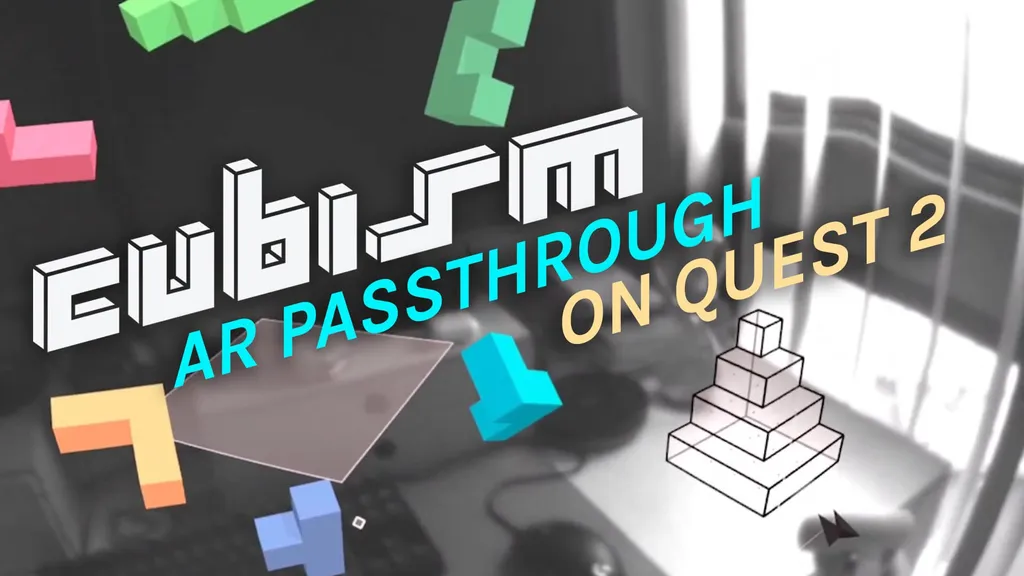Cubism is a Quest game that has always been at the forefront of the platform, successfully implementing cutting edge new features as soon as possible. The new Passthrough mode, which uses a new experimental API available to developers, is no exception. In fact, it might be the best way to play the game yet.
Cubism developer Thomas Van Bouwel gave UploadVR access to the Cubism build with Passthrough API support, first shown off on Twitter last week. We jumped in and played around with some of the puzzles, as seen in the footage embedded below, and came away absolutely delighted.
When playing in Passthrough mode, the gameplay itself remains completely unchanged. Cubism is a slow, stationary and minimalist puzzle game — the only changes when playing in Passthrough mode is the white (or black) standard background gets replaced with the Quest’s live Passthrough feed of your surroundings. The Quest is suddenly transformed into an AR device, allowing you to manipulate all of Cubism’s familiar puzzles in a live representation of the space you’re playing in.
Somewhat naturally, I started to find myself using my surroundings to help me play — as you can see in the video, I started to use my desk as a plane to work on. I placed the puzzle flat on the right of the desk, while I moved the pieces over to the left side.
Because of Cubism’s slow, stationary nature, I didn’t experience too much rapid warping of the Passthrough image while playing, which happens more frequently during head or body movement. Just like Cubism’s implementation of hand tracking and 120Hz support, implementing the AR Passthrough API feels like a properly natural fit for the game and the type of play that it encourages.
It also harks back to Cubism’s origins as a game inspired by traditional wooden block puzzles, where you’re presented with several Cubism-like wooden blocks and have to find a way to fit them together into a perfect cube. Playing through Cubism’s more complicated, virtual versions of those traditional puzzles in an environment closer to real life feels apt, in a coming full circle kind of way.
In terms of limitations, the biggest at the moment is the hardware itself — the Quest cameras are only capable of producing a black and white image. There’s also no hand tracking support for Passthrough mode in this build — it’s still on the roadmap for a future build, but a few bugs have pushed the implementation out a bit.
The AR Passthrough mode also doesn’t natively provide a way for Cubism to interpret the passthrough image as a 3D space with barriers and objects that would collide with the game elements. This means that when I wasn’t careful, I could go to position a virtual block to rest on my desk, but it would sometimes float down ‘into’ the desk while remaining visible. The same principle applies to walls and other objects– blocks, if pushed, will simply move through or inside of objects, while also remaining visible to the player.
The new Passthrough mode probably won’t be available in a public Cubism build soon because the Passthrough API is still experimental, intended for developers and requires enabling the Quest’s Experimental Mode. Van Bouwel says Cubism’s public build will get the feature eventually, but only once the Passthrough API itself moves from an experimental feature to a public release. Nonetheless, this early Passthrough build of Cubism offers a glimpse of what to expect with future AR content on Quest and other headsets still to come.
New technology aside, Cubism is also set to receive new DLC levels soon. You can read more about the history of the game here.





























